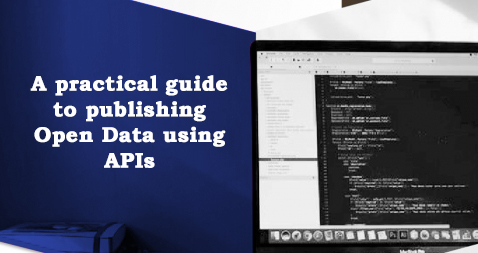A practical guide to publishing Open Data using APIs
Fecha del documento: 07-02-2025

An application programming interface or API is a mechanism that allows communication and information exchange between systems. Open data platforms, such as datos.gob.es, have this type of tool to interact with the information system and consult the data without the need for knowledge of the internal structure or the technology used in its development. Thanks to the APIs, reusers can more easily access the information they need automatically, and it is possible to adjust the download exclusively to the data required.
More and more organizations are betting on this type of mechanism, especially to publish data with a high frequency of update as the data in real time. The European Directive on Open Data and Re-use of Public Sector Information refers to the need for this type of mechanism for the publication of dynamic and high-value data. It is common to use APIs to access meteorological data, public transport data or data produced by urban monitoring sensors, although it should be noted that APIs are suitable for consuming all types of data.
With the aim of helping those open data portals that do not have an API yet, datos.gob.es has prepared a guide with the main guidelines to follow when defining and implementing this data access mechanism. The guide has been prepared by Carlos de la Fuente, expert in Information Technology and Open Data, and has been supported by a multidisciplinary group of experts from both the public administration and the field of reuse, with experience in international projects.
What can the reader find in this guide?
The guide begins with a first section dedicated to understanding what APIS are and what their value is. It explains how they work and how they are implemented. For those who want to learn more, we recommend the training unit ”Buenas prácticas en el diseño de APIs y Linked Data” (only available in Spanish).
The guide then focuses on the guidelines for designing and implementing APIs. Among other aspects, it addresses how to use URIs to identify resources or how to avoid service interruptions.
The guide ends with a series of more specific sections focusing on the implementation of APIs in Open Data catalogues, for access to linked data and to geographic web services.
What are the main improvements and updates in the 2025 release?
The guide has been revised in 2025 to update the content with new links and examples, as well as to expand the content on FIWARE with a practical focus and to go into more detail in the OpenAPI section.
A new volume in the collection
This guide is part of a collection of documents produced by the Aporta Initiative to help data publishers to facilitate access and encourage the use of published information. Specifically, the collection seeks to raise awareness of the best formats for reuse, and to provide a series of clear and simple guidelines that agencies can follow when opening their datasets, thus ensuring their quality.
The "Practical Guide to Publishing Open Data using APIs" is the second document in the series, which began in March with the publication of a first volume dedicated to the publication of tabular data in CSV files. In the coming months we will continue publishing content in our effort to facilitate the opening of data and its reuse.











